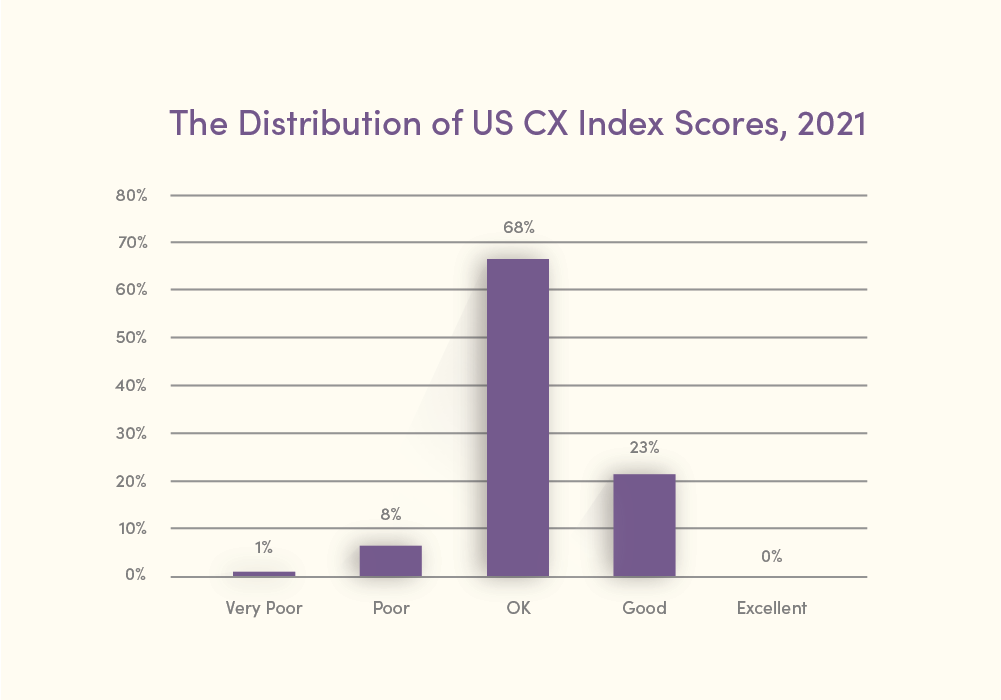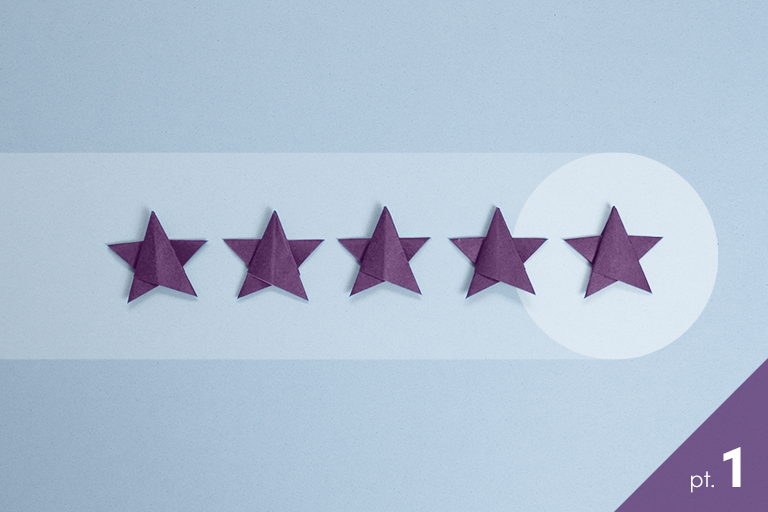Iterable’s Senior Manager of Product Marketing, Anthony Chiulli, sat down with our guest, Brendan Witcher, Forrester Vice President and Principal Analyst, to talk about the 2022 imperatives for winning customer loyalty. To expand upon some of the concepts touched upon in the webinar, we decided to create a blog series—of which this article is part one.
We want to understand what makes customers shop. What makes them choose a certain product? Remember, we’re all customers. Yes, we’re marketers too, but that doesn’t mean we don’t have our own relationships with brands as the consumer. Of course we do. Thinking from the customer perspective instead of the marketer perspective can help shine some light on how your brand can win customer loyalty.
Brendan kicked off the webinar with a quote from Jim Collins’ Good to Great. “Good is the enemy of great.”
To us, this means that brands often settle for being good enough versus going further to be great. If everyone else is doing what you’re doing, then you’re doing something right, right? You’re doing good enough. But, “good enough” no longer suffices when it comes to the customer experience. Let’s look at why.
It’s Difficult to Stand Out in a Sea of Similarity
Brendan uses the shopping cart example in the webinar:
“I want you to imagine that at your local grocery store, there’s literally no shopping carts.
I don’t mean they’re all being used. I mean literally there are no shopping carts. How do you feel about this? You’re confused, right? You’re angry, you’re frustrated.…Where are all the shopping carts at? And the manager looks you straight in the eye and says, we couldn’t figure out the ROI of a shopping cart. So we decided to get rid of them. They’re hard to maintain. They’re hard to manage. They always got that left wheel that pulls you into the aisle. So we got rid of them again. How do you feel at this moment, right? Frustrated, angry? Surprised? Certainly. Probably not delighted. But the thing of it is that we, today, have expectations about shopping.”
The way we see it is that if you, as a customer, walk into a grocery store and they have no shopping carts, you’re going to go to a different store that has carts. This is not because there’s a difference of products—competing based on assortment is a thing of the past—it’s because there’s a difference in experience. If customers can get anything anywhere, there has to be some other differentiating factor that makes them choose your brand over a competitor.
Dealing with Digital Sameness
Fine-tuning and rethinking the customer experience from good to great is a way for brick-and-mortar brands to stand out in a sea of similarity. But now, in an internet-based world, brands are faced with the challenge of digital sameness—the customer experience across websites has become pretty uniform.
In a Forrester survey, customers were asked how they feel about the experiences they have with brands. The results? 68% of customers said their customer experiences were OK.


A 2021 Forrester survey shows that the majority of customers have an OK experience and none have an excellent experience. Source: Customer Experience Online Survey, 2021.
From these results we can assume that brands are thinking, “we’re doing what everyone else is doing, so that’s good right?” Yeah it is good, but it’s not great. Living in this safe, comfortable area is incredibly volatile for brands in the digital space. All it takes is one brand to go above and beyond to shift the expectations and turn satisfactory experiences into not-so-satisfactory.
New Experiences Become Customer Expectations
Customers are smart. When there is a part of their journey with a brand that positively impacts their overall experience, and then they switch to a different brand that doesn’t provide the same part, the experience with the second brand is viewed less favorably—not because it’s worse than it used to be, compared to itself, but because it’s worse than the first brand’s experience.
Brendan used a banking site as an example:
“Let’s say that you went to your banking website, okay? There was a problem with your account. And you’re saying, okay, I’m not sure what’s going on. And then a virtual agent pops up and says, ‘Hey, you’re hovering here. Well, is there something I can help you with?’ And you type into this automated assistant. You say, ‘Yes, there seems to be a problem with my account.’ So it says, ‘One moment, please. Sorry, you’re having a problem. Let me check.’ And then it comes back and says, ‘It looks like I might have fixed the problem with your account. Please refresh your browser.’ You refresh your browser. Sure enough, your problems. Great, right?
You say, all right, well, [I’ve] got to go to my insurance website. Let’s say you go to your insurance website, you go there and there’s a problem with your account. What’s the first thing you’re going to do? You’re looking for that virtual agent to pop up, right? That’s what you’re looking for, but you don’t find it. In fact, it’s not there. What you will see, though, is a little link that says, ‘give us a call if you’re having a problem with your account.’ Now, as a consumer, are you instantly disappointed? Yes, you are. Did you compare that insurance company to another insurance company? No. You compared it to your last digital experience.”
Our takeaway: even though the insurance site has always had this as the option for contacting customer support, the customer just experienced a much more seamless customer experience, making the insurance site feel outdated and the overall experience is viewed negatively.
If one brand elevates the digital experience, customers expect all brands to be able to do the same. So, it’s not enough to just have a good experience because it’s easy to get left behind when improvements are introduced.
Customers are Making Industry-Agnostic Comparisons
Customers aren’t comparing your brand to similar brands, they’re comparing your brand’s digital experience to the last digital experience they had. Industry no longer matters—everyone is digital.
“You can’t just look at your industry. You have to look at what people are experiencing everywhere.” – Brendan Witcher
Digital functionality isn’t exclusive by industry, digital brands use third-party tech to enable certain marketing features, and customers are very aware of this. After one great experience, customers will start to think, “why isn’t everyone doing this?” So, be sure your brand is doing what it can to stay on the cutting edge of a great—not good—customer experience.
For more detailed tips and tricks, remember to watch the webinar and stay tuned for the next article in this series which will focus on hyper-adoption and hyper-abandonment.






























